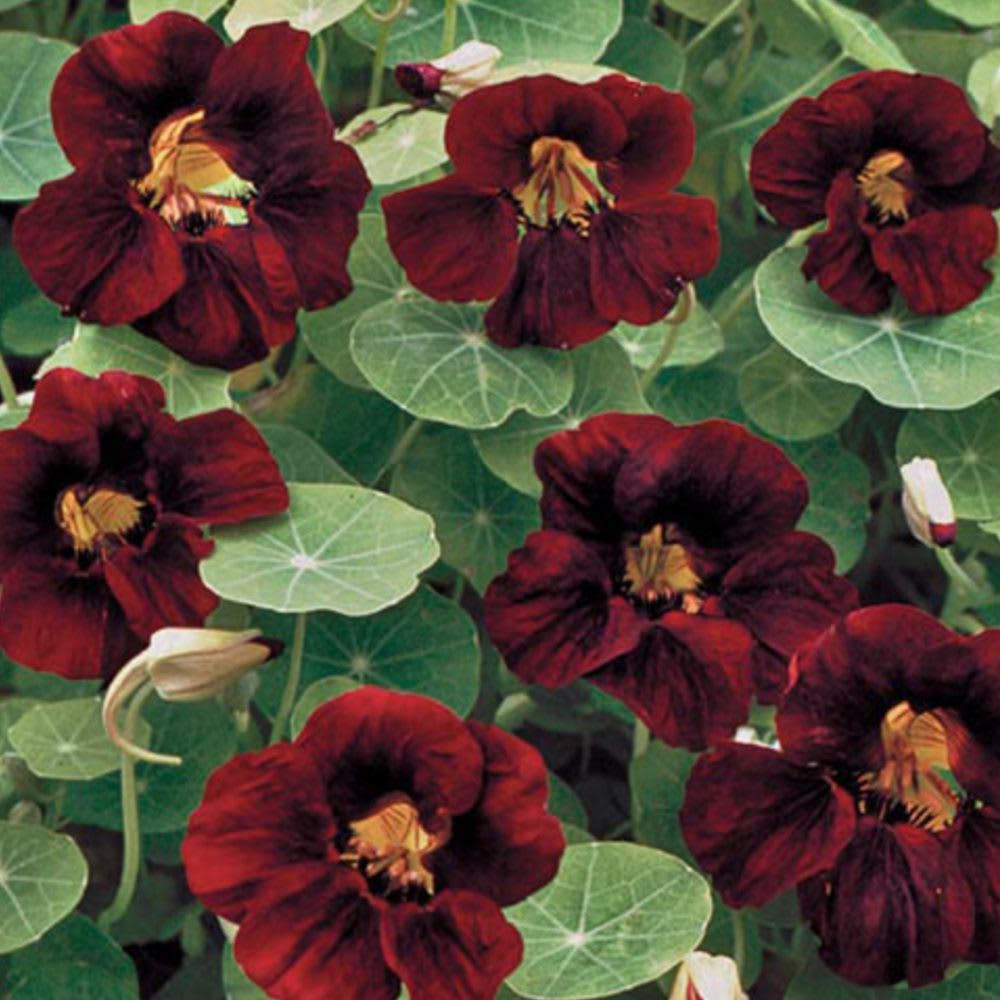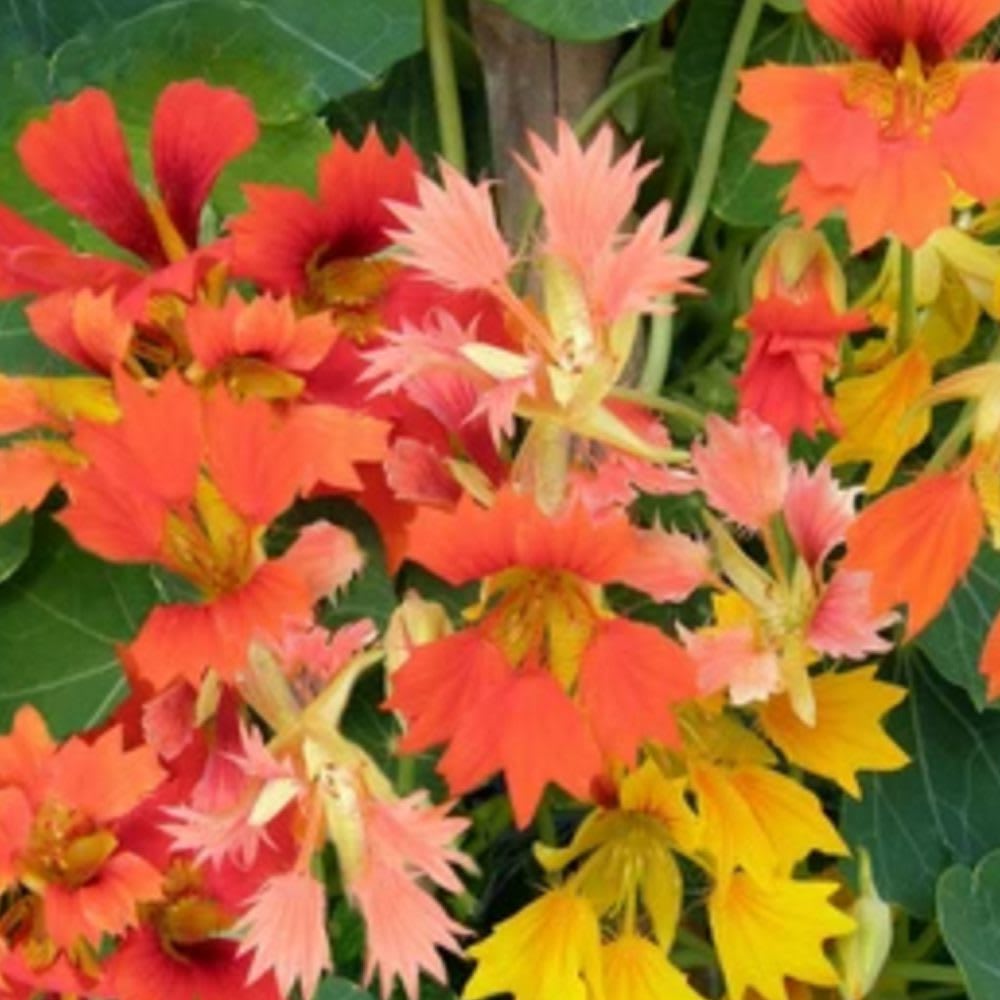Have you ever wanted to add a splash of color and a burst of peppery flavor to your garden and meals? Look no further than nasturtiums! These delightful and versatile flowers are a must-have for any gardening enthusiast or culinary explorer. In this comprehensive guide, we’ll introduce you to the world of nasturtiums, from their vibrant blooms to their surprising culinary uses. So, let’s dive in and uncover the beauty and benefits of these fantastic flowers.
1. Introducing Nasturtiums: A Feast for the Senses
Nasturtiums (Tropaeolum majus) are cheerful, low-maintenance annual flowers that come in a range of vivid colors, including fiery oranges, sunny yellows, and rich reds. Native to South America, these delightful blooms have found their way into gardens worldwide due to their beauty and unique attributes.
Fun Fact: The name “nasturtium” comes from the Latin words “nasus tortus,” meaning “twisted nose,” referring to the flower’s peppery scent and taste.
2. Growing Nasturtiums: Easy and Rewarding
One of the best things about nasturtiums is how easy they are to grow, making them perfect for both beginners and experienced gardeners. These resilient flowers thrive in various climates and soil types, as long as they receive ample sunlight and well-draining soil.
Pro Tip: Plant nasturtiums in early spring after the last frost, and they’ll reward you with vibrant blooms throughout the growing season.
3. The Many Uses of Nasturtiums: Beauty and Flavor Combined
Nasturtiums are not just pretty faces; they are also edible and boast a delightful peppery flavor. Both the flowers and the young leaves are edible, making them a versatile addition to your culinary creations.
Pro Tip: Use nasturtium flowers to garnish salads, soups, and appetizers, or stuff them with flavored cream cheese for a unique and visually stunning treat.


4. Health Benefits of Nasturtiums: More Than Meets the Eye
Beyond their aesthetic and culinary appeal, nasturtiums offer several health benefits. They are rich in vitamin C and have natural antibiotic and antioxidant properties. Some herbal medicine practitioners also use nasturtiums for their potential to support the respiratory and urinary systems.
Pro Tip: Brew dried nasturtium leaves into a herbal tea to enjoy their potential health benefits.
5. Nasturtium Varieties: A Kaleidoscope of Colors
Nasturtiums come in various varieties, each with its unique charm. Some popular ones include the Alaska Mix, which features variegated leaves, the Whirlybird Mix with semi-double blooms, and the Empress of India with deep crimson flowers.
Pro Tip: Consider planting a mix of nasturtium varieties to create a vibrant and dynamic display in your garden.
Conclusion: Embrace the Beauty and Flavor
In conclusion, nasturtiums are not just flowers; they are a delightful and multi-faceted addition to any garden and kitchen. From their eye-catching colors to their zesty taste, these blooms are sure to bring joy to your gardening and culinary adventures. So, why not embrace the beauty and flavor of nasturtiums and elevate your gardening and dining experiences?
Frequently Asked Questions (FAQs):
- Can I grow nasturtiums in pots or containers?
Absolutely! Nasturtiums are well-suited for container gardening and will thrive in pots with good drainage.
- Are nasturtiums deer-resistant?
Yes, nasturtiums have a slightly peppery taste that deer find unappealing, making them a good choice for deer-prone areas.
- Can I save nasturtium seeds for the next season?
Yes, you can save nasturtium seeds after they have matured and dried on the plant. Store them in a cool, dry place for planting the following year.
- Are nasturtiums attractive to pollinators?
Nasturtiums are known to attract pollinators such as bees and butterflies, making them a valuable addition to any pollinator-friendly garden.
- Are all parts of the nasturtium plant edible?
While the flowers and young leaves are edible, it’s essential to note that the seeds are toxic and should not be consumed.
Footnotes:
1 Source: University of Maryland Medical Center, “Vitamin C (Ascorbic Acid),” https://www.umm.edu/health/medical/altmed/supplement/vitamin-c-ascorbic-acid
2 Source: National Center for Biotechnology Information, “Tropaeolum majus: A Review on its Antioxidant and Anti-Inflammatory Activities,” https://pubmed.ncbi.nlm.nih.gov/28539795/
[…] buttercrunch, chard, kales, mesculen mix, mizuna, nasturtium, romaines, sorrel, spinach, […]
[…] Arugula, Bronze Fennel, Chives, Cilantro, Dill, Fennel, Lavender, Mint, Nasturtium, Oregano, Parsley, Rosemary, Sage, Seasoning Celery, Sweet Marjoram, Thyme, Violas, Watercress, […]